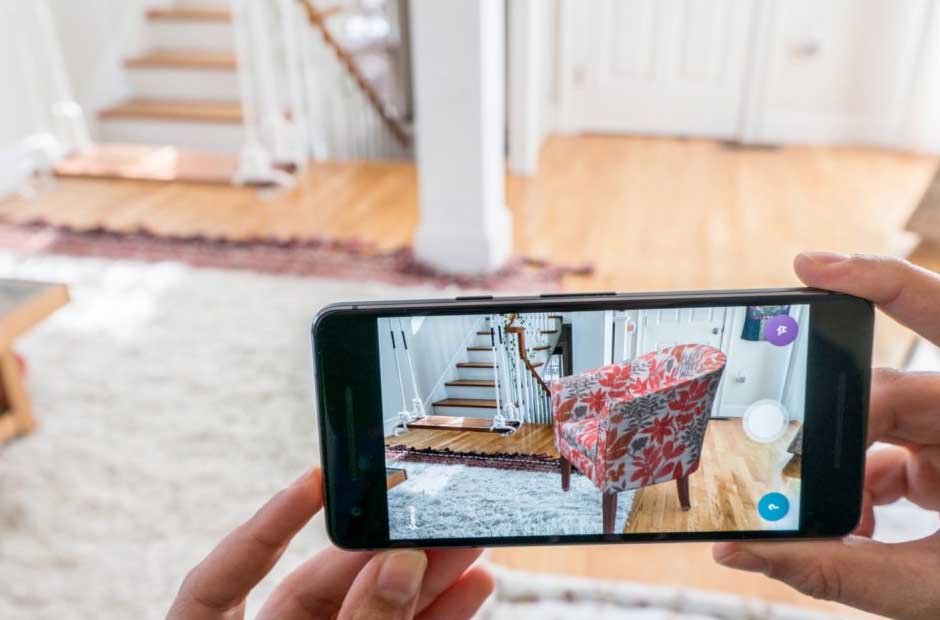The online furniture industry has witnessed remarkable growth in recent years, driven by technological advancements and changing consumer preferences. However, one significant challenge that online furniture retailers face is helping customers envision how a piece of furniture will fit into their space before making a purchase. This limitation has led to higher return rates and dissatisfied customers. Enter Augmented Reality (AR), a cutting-edge technology that is revolutionizing the way consumers shop for furniture online. In this article, we will explore how AR is reshaping the online furniture industry, empowering customers to Place, Visualize, and Buy with confidence.
1. Augmented Reality: Redefining the Shopping Experience
Augmented Reality: A Brief Overview Augmented Reality is a technology that superimposes computer-generated elements, such as images, audio, and text, onto the real world. By blending virtual elements with the physical environment, AR enables users to have an immersive and interactive experience.
AR in Furniture Ecommerce AR has become a game-changer for the furniture ecommerce sector. Traditionally, customers relied on product images and descriptions to make their purchase decisions, leading to uncertainty about how the furniture would look in their homes. With AR, customers can now visualize products in their actual living spaces, making the shopping experience more engaging and reducing the risk of dissatisfaction.
2. The Power of Place: Virtually “Try Before You Buy”
Overcoming Spatial Constraints One of the primary challenges faced by online furniture retailers is the ability to showcase the full potential of their products. AR addresses this challenge by allowing customers to virtually “place” furniture items in their homes using their smartphones or tablets. This visualization gives customers a clear understanding of how the furniture will fit into their space, enabling them to make more informed decisions.
Personalization and Customization AR goes beyond displaying generic images of furniture. Customers can personalize their choices by selecting different colors, materials, and sizes, and see how these modifications integrate seamlessly into their home environment. This level of personalization enhances customer satisfaction and fosters a sense of ownership even before the purchase is made.
3. Visualize: Bridging the Imagination Gap
Enhancing Customer Confidence When shopping for furniture online, customers often struggle to visualize the size and proportions of a product accurately. This imagination gap can lead to disappointment upon delivery. However, AR technology provides a realistic representation of the furniture in the customer’s room, thereby bridging this gap and instilling confidence in their purchase.
Style Coordination AR allows customers to assess whether the selected furniture complements their existing décor and style. This feature is particularly valuable when purchasing individual pieces that need to harmonize with the overall ambiance of the room. By visualizing the furniture in their space, customers can be assured of an aesthetically pleasing and coordinated look.
4. Buy with Confidence: Reducing Returns and Increasing Sales
Curbing Buyer’s Remorse Buyer’s remorse is a common issue in the online furniture industry, often resulting from the discrepancy between customer expectations and the actual product. AR minimizes this by providing an accurate representation of the furniture in the customer’s space before the purchase is made. As a result, customers feel more confident in their choices and are less likely to return products.
Positive Impact on Sales By integrating AR technology, furniture ecommerce platforms have reported a significant increase in sales. Customers are more likely to complete a purchase when they can virtually experience the furniture in their homes. Moreover, positive reviews and word-of-mouth recommendations from satisfied customers who had an enjoyable AR-assisted shopping experience can further boost sales.
5. Unique Insights: The Future of AR in Furniture Ecommerce
The future of the furniture ecommerce industry lies in the seamless integration of AR technology, enabling customers to experience an unparalleled AR furniture store adventure. AR-powered interactive catalogs will take center stage, transforming the way customers explore and interact with products. Gone are the days of static images; instead, customers will virtually walk through dynamic digital showrooms, where they can visualize various furniture pieces in their homes before making a purchase. This immersive AR experience will revolutionize online shopping, elevating the concept of a traditional furniture store to new heights. Additionally, the prospect of social shopping in AR will empower customers to share their personalized room designs effortlessly, sparking conversations and recommendations about their favorite AR furniture store finds within their social circles.
As the furniture ecommerce industry progresses, embracing AR’s potential will undoubtedly differentiate forward-thinking businesses, propelling them to become the go-to destination for customers seeking an extraordinary and convenient AR furniture store experience.
Conclusion
Augmented Reality is undoubtedly reshaping the online furniture industry, empowering customers with the ability to Place, Visualize, and Buy furniture with greater confidence and satisfaction. By addressing spatial constraints, bridging the imagination gap, and reducing buyer’s remorse, AR is transforming the way customers shop for furniture online. As the technology continues to evolve, we can expect to see more innovative applications, such as furniture visualization software, interactive catalogs and social shopping in AR, which will further revolutionize the furniture ecommerce landscape. Embracing AR will be the key to staying competitive and delivering exceptional customer experiences in the future of furniture retail.
















